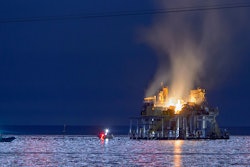
Electrical workers must heed specific protocols to guarantee they are operating under the safest circumstances; voltage, current or potentially exposed wires are not only dangerous, they can be life-threatening. To help ensure safety, qualified personnel should closely follow the National Fire Protection Association (NFPA) article 70E, Standard for Electrical Safety in the Workplace, which outlines detailed steps and precautions that must be considered to reduce electricity-related risks.
As NFPA 70E guidelines update every three years, it is imperative workers involved in the operation and maintenance of electric equipment understand the various updates and additions made within each new edition.
While many of the anticipated changes to the 2018 edition will serve to clarify definitions or processes already in place, there will be several updates made to guidelines for electrical risk assessments, which this article will review in detail.
No. 1 — Accounting For Human Error Will Be Added
While assessing risks caused by equipment functionality has always been a good practice, the revisions to NFPA 70E will take the process a step further. In addition to identifying hazards and risks in the ‘present state’ of the equipment, it will now be mandatory for all electrical work across every sector regulated by the Occupational Health and Safety Administration (OSHA) to incorporate an assessment for the risks posed by human error — such as what might happen if electrical equipment gets wet or a wire is accidentally cut. This mandate will be introduced through the expansion of Risk Assessment Procedures and more specific requirements for Job Safety Planning and Job Briefings, which have been required for all jobs involving electrical equipment, but now include more specific direction as to the content.
No. 2 — Utilizing The Hierarchy Of Controls Will Be Mandatory
The hierarchy of controls, found in Sec. 110.1(H), will need to be applied to every job following the initial assessment. Electrical workers using a different process will now need to adapt to NFPA’s specific methods to mitigate risks, in order of their hierarchy:
- Elimination
- Substitution
- Engineering controls
- Awareness
- Administrative controls
- Personal protective equipment (PPE)
This adjustment aims to reframe thinking around and enable better understanding of PPE. Often used as a first line of defense, PPE should only be considered the last as it only lessens injury or helps to protect against death, not prevent an incident from occurring.

No. 3 —New PPE Markings Will Be Provided
To provide further clarity around PPE, the 2018 edition of 70E includes new marking requirements that will help electrical workers understand and select high-quality PPE that is appropriate for the potential hazard. This includes:
- Name of manufacturer
- The product performance standards to which the product conforms
- Arc rating where appropriate for the PPE
- One or more identifiers such as model, serial number, lot number, or traceability code
- Care instructions
No. 4 — Design And Maintenance Will Be Considered
In addition, updates to Section 130.5(B), Estimate of Likelihood and Severity, address further considerations for the design and maintenance of the overcurrent protective device and its opening time. Fault clearing time directly affects the level of available incident energy during an arcing fault event. As equipment ages and reaches the end of its useful life, this functionality begins to degrade. New assessment procedures outlined in the 2018 edition of NFPA will account for these issues.
Conclusion
Despite the very serious risks posed by electrical hazards, including death, employees can often feel pressured by time and costs to look for workarounds to safety protocols, putting the worker, his colleagues and the facility in harm’s way.
There are several steps management can take to ensure that employees are serious about safety:
- Training: New training should take place at least every three years, to keep workers up to date on the latest research, processes and procedures (including NFPA 70E).
- Open Dialogue: Clear employee communications regarding job-specific concerns can encourage dialogue between employees and their supervisors, providing more opportunity to ask questions and contribute to the facility’s safety culture.
- Empowerment: Managers should empower their workers to proactively raise concerns for conditions that may affect their working environment. Electrical personnel should feel comfortable stopping work until proper documentation is provided and safety protocols are followed.
Employees must understand and follow NFPA 70E guidelines to ensure their safety is always placed first. If these guidelines are not strictly followed, the risks for workers are heightened and workers may be at risk of suffering injury or even death.
Corey Jasper is a Power System Engineer at Schneider Electric where he is responsible for developing ground fault protection schemes for low voltage systems with multiple grounded sources in the St. Louis region. Corey has extensive knowledge on electrical safe work practices policies, including NFPA 70E. He received his Bachelor of Science in Electrical Engineering from the University of Missouri — Rolla in 2004.






















